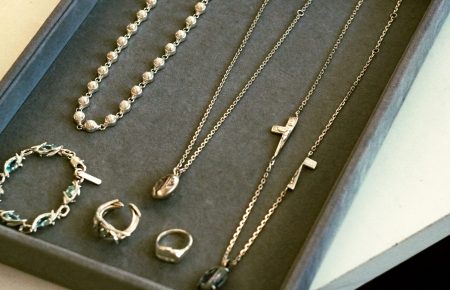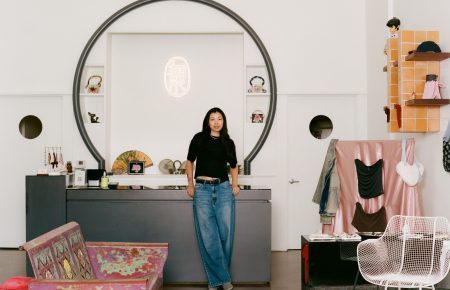I can easily imagine living in Japan. To an outsider like me, the culture has vast creative depths and seems to encourage a quiet dedication to exploring them.
Each visit to Tokyo re-awakens my plans to move there. So even before meeting Christopher Hancy, the 31-year-old Tokyo-based fashion designer and Australian transplant by way of Antwerp, I felt I could understand why he would choose to make his home here.
Hancy’s family arrived on one of the first boats to land on the continent of Australia at the start of the 19th century. Still, while growing up, Hancy was often asked where he was from. He looks nothing like the prototypical light-skinned blonde Aussie surfer.
“That’s where my identity problem comes from, I guess.” For him, his inability to fit in as a kid partially explains his interest in creating culture and how individuals define themselves through fashion, art, and music.
As a high schooler, Hancy wanted to become a doctor, but failed the necessary exam. His backup plan was becoming a lawyer, but he found solving other people’s disputes over accidents and money to be boring.
He then tried his hand at something completely different by studying fine art at a school taught completely by practicing artists. However, at the time, he saw the life of an artist as full of struggle and unhappiness. He then happened on modeling, which introduced him to the fashion world.
Hancy was drawn to fashion because he saw it as having “this commercial aspect where everything is deadlines and crunch times to make some kind of product which then they want to sell, but at the same time they’re creating a fantasy, so it has the same aspirations as art.”
After ten years of experience in fashion, Hancy remains drawn to creating both desirable apparel and beautiful things, but not mere fantasies.
Hancy tells me, “there’s so many young brands and everyone is trying to outdo each other, smashing out over-the-top stuff.”
He admits he’s also a young designer and that, although there is a place for spectacle-like work, he wants no part of the competitive aspect of fashion or its over-the-top style.
“It’s boring to be doing that. For me, that’s the easy route. That’s the easy way to go, creating this extravagant showpiece stuff, because that’s my background.”
To him, contemporary fashion is intent on “selling a fantasy, selling a dream that doesn’t exist.” He goes on to say, “I want to show something that’s more difficult, which is showing beautiful things in everyday life.”
This is why Hancy created his brand BEAUGAN in early 2017. He seeks to reveal the extant beauty in the natural world and everyday life, and hopes this concept will grow and spread to other designers and creative people.
日本に住むという選択は、自分でも簡単に想像できる。私のような外国人にとって、日本の文化は広く、深く、クリエイティブであり、かつその文化はそれ自身を探っていくための静かな貢献、言い換えれば職人気質を持つことを促しているように感じる。毎度東京に行く度に、日本に移住することを何度も検討していたことを思い出せられるのだった。だからこそ、現在拠点を東京とし、過去にアントワープで学んだ31歳のオーストラリア人ファッションデザイナーのクリストファー・ハンシ― (Christopher Hancy)に出会う前から、なぜ彼がこの国に住むことを選んだのか理解できたのだった。
ハンシ―の先祖は、初めてその大陸に上陸した船に乗って19世紀にオーストラリアにやってきた。彼の先祖はオーストラリアに入植した第一世代にもかかわらず、小さな頃からハンシ―は、「どこから来たの?」と度々尋ねられることがあった。彼は、ブロンドでサーファーで白人といった典型的なオーストラリア人のイメージとは掛け離れていたからである。「多分、そういう経験から、僕のアイデンティティに対する問題が生まれたんだと思う。」と、ハンシ―は語る。彼にとって、小さな頃に周りに馴染めなかった経験が、彼の現在の興味である“新しい文化を作ること”、“音楽、芸術、ファッションを通じて自分自身を定義する=アイデンティティを創出すること”を、部分的に説明しているように思える。
高校生の頃のハンシ―は医者を目指していたが、入試に落ちてしまった。そのバックアップとしての道は弁護士だったが、お金に関する事件や他人の問題を解決するという仕事はつまらないと感じてしまった。そこから一転し、現役のアーティストが教鞭をとる大学にてファインアートを学ぶことにより、それまでとは全く新しい何かを始めようと考えた。しかしながら、教諭であったアーティスト達の苦しく不幸な人生を目の当たりにした為に、その道へも疑問を感じてしまうのであった。
そんな中、ひょんなことで始めたモデルの仕事を通してファッションの道にいざなわれるのであった。ハンシ―はそこからファッションに、溺れていった。それは、期日に追われ時間を切り詰めながらも、売りたいと思う“商品”を創るというビジネス的側面を持ちながらも、“ファンタジーの世界を創る”= “アート”とも同じ側面を持っているということが理由だった。ファッション業界で10年を経た今もなお、ハンシ―はその“人に求められる商品”と“美しいモノ”の2つの要素を創っていくという姿勢を取り続けている。ただし、 “ファンタジー”は彼の必要とする要素から消えたのだった。
「とてつもない数の若いブランドがある中、全員が“1番”になるため、過度で派手なことをして、常に周りと競い合っているんだ。」彼は、彼自身も若いデザイナーであることを認めているが、仮にスケールの大きな仕事が目の前にあったとしても、競い合ってばかりで派手過ぎるスタイルのファッションの一部になろうとは一切思っていないようだ。「そんなことしてもつまらないしね。僕はそれって簡単なルートだと思ってる。そういったやりすぎなくらい派手でショーピース的なものを作るのは簡単な方法だよ。だって自分もこれまで、そうやってきたから。」
現代のファッションは、“ファンタジー”=“存在していない夢”を売ることに没頭しすぎているように彼には映っている。さらにこう続けた、「僕はもっと難しいことを見せたいんだ、毎日の生活の中にこそ美しいものがあるということを。」これが、ハンシ―が2017年にBEAUGAN(ボーガン)を立ち上げた理由である。日常、そして自然の中に存在する美の概念に彼はスポットライトを当てた。そしてこのコンセプトが、他のデザイナーやクリエイティブな人々の中にもっと広まっていって欲しいと望んでいる。
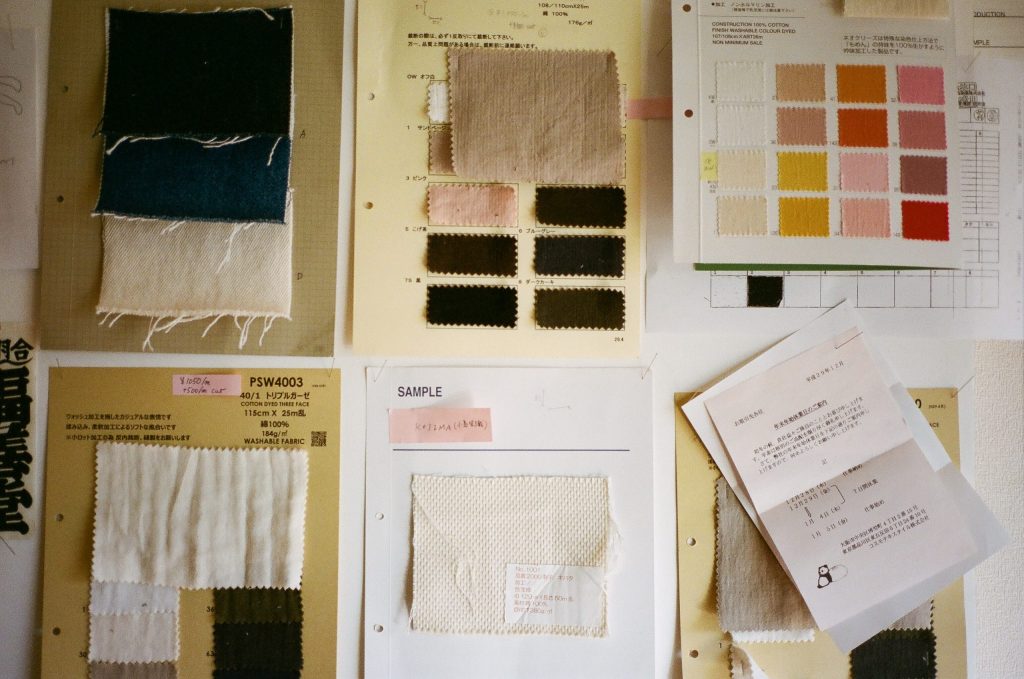
Fabric swatches covering a portion of one of the studio’s main walls.


“I want to show something that’s more difficult, which is showing beautiful things in everyday life.”
— Hancy on the original thinking behind BEAUGAN

Samples of the BEAUGAN Spring/Summer 2018 Collection.
BEAUGAN is Hancy’s vision of “clothing that’s very normal.” “Normal” to Hancy does not mean simple, both in terms of concept and manufacturing. The first collection, Fall/Winter 2017, consisted of forty-two separate brown and black variants of 22 designs.
Each article’s unique color is produced through dorozome, a mud-dying technique from Japan’s Amami island. The 1,300-year-old art has remained largely unchanged thanks to the island’s distance from the mainland and the Amami artisans’ dedication to sustainability.
Tree bark, dried coral, mud, and clay found on the island are used in the different steps of the dying process.
Much like denim, Hancy’s dorozome clothing will develop character over time, changing in color and patina depending on the wearer.
Dorozome artisans labor over their materials and garments by hand, and the process has a built-in timeline that cannot be rushed.
Hancy wants BEAUGAN to represent an alternative to the fast-paced cycles of flashy contemporary fashion introduced to him during his studies at the Royal Academy of Fine Arts in Antwerp.
His graduate collection in 2012 consisted of dramatic streetwear-inspired pieces with big silhouettes. It was so well received that each item from the collection was snatched up by different members of the fashion industry, who bought them privately from Hancy.
When he launched BEAUGAN, these same supporters were confused.
“Because when you compare it to my previous work, it’s much more toned down and keyed in.”
After graduation, Hancy became disillusioned by the excessive way fashion designers create and the excessive way people consume. He needed to take a step back and rethink what he wanted to achieve.
“I didn’t want to become a particular kind of person. I knew how to make all these showpieces, but I didn’t know how to make clothing. I knew fashion, but I didn’t know what goes into fashion.”
BEAUGANはハンシ―の意味するこの“ノーマルな服”ということに対する想いの表れである。彼の意味する“ノーマルな服”というのは、文字通りのありきたりな意味での“普通”ではなく、“表面上は普通=シンプルに見えるが、実はコンセプトと服の構造は考え抜かれたもの”を意味している。
デビューコレクションの2017秋冬コレクションは、茶と黒の22型、計42ピースで構成されている。それぞれのピースのユニークな色は“泥染め”により生まれた色である。泥染めとは、奄美大島で1300年に渡り変わることなく続いている、現地の職人たちによるサステイナブルな染色技法である。島での恵みである樹皮、死んだ珊瑚、泥や粘土は、それぞれ染色の異なる工程で使用される。デニムのようだと言えば分かり易いかもしれないのは、ハンシ―の泥染めの服は、着る人によって色やしわが生まれ、時間を経るごとに、それぞれの味が出てくるからだ。
泥染め職人はすべての生地や服を手で染めていて、そのプロセスは人間が都合よくコントロールすることができない、自然のリズムによって定められたタイムラインで成り立っている。ハンシ―はBEAUGANを、アントワープ王立アカデミー時代で経験した回転の激しい現代のファッションに対するオルタナティブな存在の代名詞にしていきたいと思っている。彼の2012年の卒業コレクションは、大きなシルエットが特徴的なドラマチックなストリートウエアだった。その評判はファッション業界で活躍する人々からも支持され、個人的に購入されたほどだった。
しかし、BEAUGANをローンチした時、その時に支援してくれた業界人たちは少々混乱したようだ。「なんでかって、今のコレクションと当時の卒業コレクションとでは、全く別物だったから。もっと落ち着いたし、重要なことが何か自分の中で明確だったから。」卒業後、ハンシ―は過度な消費を生み出す現代のファッションデザイナーの世界から抜け出した。彼は、一歩下がって周りを俯瞰し、自信が何を達成したいのかを考え直すようになった。「僕はファッション業界によくいる典型的な人にはなりたくなかった。ああいったショーピース的な服をどうやって作るかはもう知っている。だけど、着るための“服”をどうやって作るかは知らなかった。ファッション業界はよく理解している。だけど、何がファッションに本当に必要なのかは知らなかったんだ。」

Walking from the station to the BEAUGAN studio.
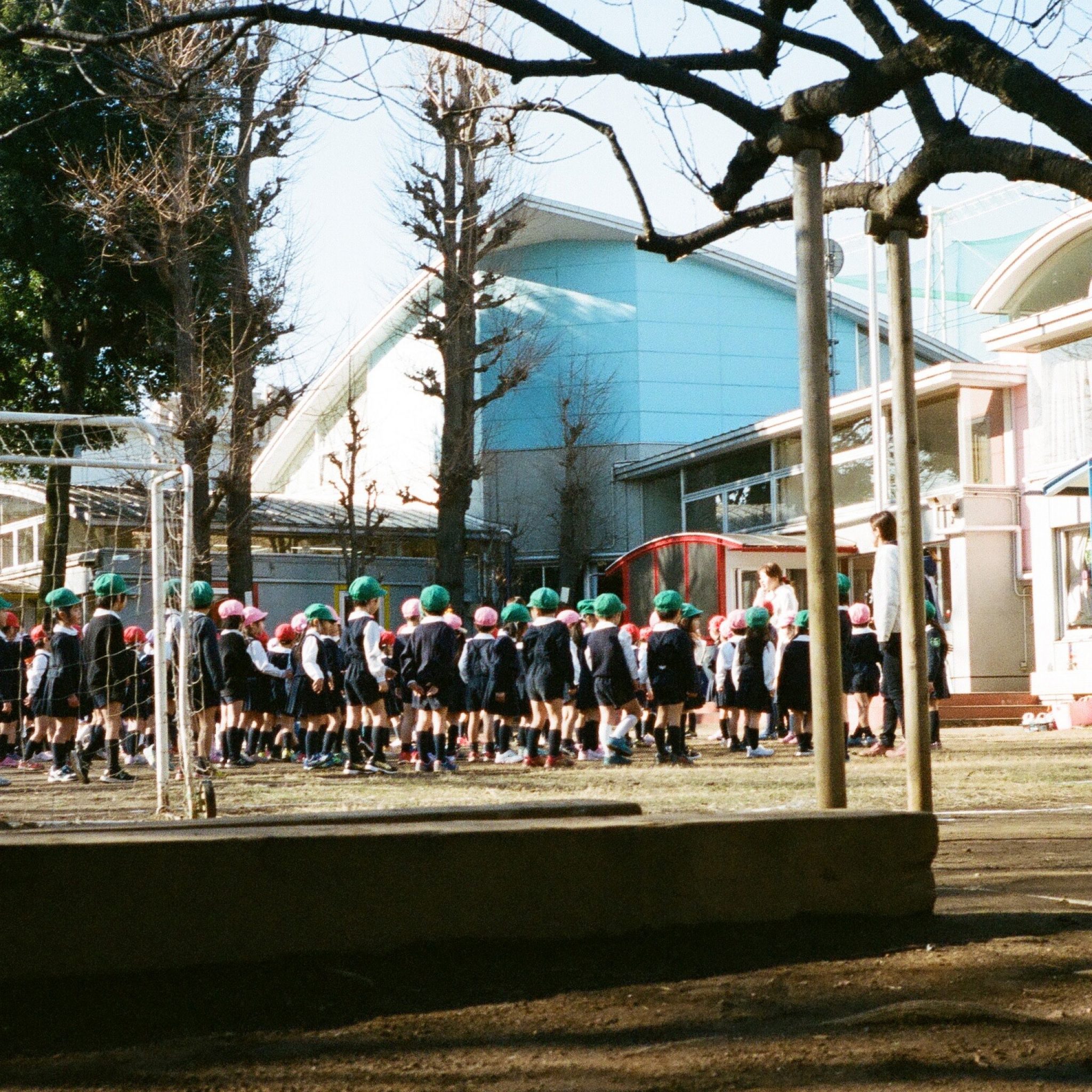
A primary school in the neighborhood.
The BEAUGAN studio in Tokyo is located in a small upstairs apartment across from a junior high school on a quiet street in Yoyogi, a district sandwiched between the bustling hubs of Shinjuku and Shibuya.
The name BEAUGAN is a portmanteau of ‘beautiful’ and ‘bogan,’ Australian slang for someone who’s rough around the edges, or as Hancy defines it, “an uncouth or unsophisticated person regarded as being of low social status.”
The term used to have a stronger negative connotation and was intended as a put-down, but has since evolved into a term that can be used light-heartedly between friends.
I connect Hancy’s choice of the word ‘bogan’ to the interest he has in the Japanese dance form ankoku butoh.
Following Japan’s defeat in World War II, the country’s general consciousness once again shifted to following the West and modernizing (as it did with the Meiji Restoration in 1868).
In terms of dance, this meant that ballet was considered the most beautiful dance form. Ankoku butoh (“dance of darkness”) was created by Tatsumi Hijikata in the late 1950s as a reaction against the adoration of European culture over Japanese culture.
Hijikata wanted to resurrect the idea behind kabuki theater, which traditionally was entertainment for everyday people and similar to television soap operas. Noh theater was for the elite in Japanese society, and kabuki was for everyone.
“Hijikata wanted to recreate that spirit of the man and woman on the street,” Hancy tells me, “he was inspired by his grandmother walking through the mud when she was planting rice, working the rice field hunched over. He saw this kind of movement, this painful, slow, struggling movement, as something that’s beautiful.”
To Hijikata, ankoku butoh was the opposite of the ethereal lightness idealized by ballet. Ankoku butoh is about human struggle on Earth depicted as a beautiful thing.
“It sounds horrible, but the world is a struggle. We have to live through the world somehow, through the struggle. He was being pure to that in a way.”
Hancy talks about what he finds so inspiring about Hijikata’s vision, “it’s born from the dirt. It comes from people themselves and their ingenuity.”
“Born from the dirt” is a useful way to understand BEAUGAN. With BEAUGAN, Hancy wants to put something out in the world that is beautiful and desirable in a way that isn’t gimmicky or excessive.
“I want all the design processes to be there for a reason. There’s a reason why the shape is cut like this or the pocket is assembled like that. Everything is really thought about.”
The process of dorozome means the garments are literally transformed by mud, but the choices Hancy makes are also intentionally focused, as much as possible, on origins. Hancy starts his design process by thinking about the needs and life of the wearer, rather than envisioning a final surreal photo campaign or fashion week presentation.
“I really think about the person that’s going to wear it. I think that’s something that fashion has kind of lost.”
BEAUGANは東京・代々木に所在する中学校からすぐ傍の静かな路地にある小さなアパートの2階にスタジオを構えている。BEAUGANというワードはBeautifulとBoganという2つの単語による造語である。Boganとはオーストラリア語のスラングで荒っぽくてぶっきらぼうな人という意味であり、あるいは無骨で洗礼されていない人で、社会的地位が低い人とハンシ―は定義する。Boganという言葉は、かつてはネガティブな意味を示唆したり、他人を見下す際に使われていたが、現在では友達の間で気軽に使われるような言葉に変わってきたと言う。
私は彼のBoganという言葉のチョイスを彼の興味の一つである日本の暗黒舞踏に関連付けた。
第二次世界大戦に敗戦後の日本の意識は、西洋文化や1868年の明治維新にも代表される近代化へと向いて行った。その為、ダンスという点においてもバレエが最も美しいとされていたのだった。1960年代に土方巽により創り出された“暗黒舞踏”は、日本文化より欧米文化を重んじる日本に対する反抗であった。土方は、歴史的には大衆娯楽であり現代でいうテレビドラマ的な位置づけだった、歌舞伎のアイディアを復活させたかった。
能は社会的に地位の高い人々に対するものであったが、歌舞伎はそうではなく、地位に関係なく大衆のものだった。土方は社会的地位が低い人々の精神を生まれ変わらせたかったと、ハンシ―は語る。土方は彼のおばあさんが田植えの際に背中を折り曲げて泥の中を歩いていく姿にインスパイアされ、舞踏を創った。このような必死に生きる姿の中こそに、美を見いだしたのである。
土方にとって暗黒舞踏はバレエにみる優雅な光とは対極に位置するものであった。暗黒舞踏とは地球上で必死に生きる人間について描いたものであり、それを美しいと定義したのである。「あんまり聞こえはよくないと思うけれど、世界中の人々が必死になって生きているのが現実。
僕たちはどうにかこの世の中を、もがきながら生き抜いていかないといけない。土方はそれについて、全くその通りだったと思うんだ。」ハンシ―は土方の思想のどこに強く影響を受けたのかをこう語る。「土から生まれた。これは人々と、彼らの創意により生まれたものだ。」
「土から生まれた。」それはBEAUGANを説明するにあたり、的を得た言葉である。ハンシ―はBEAUGANを通して、不必要に派手で過度な方法ではなく、人々に求められる美しいものを世界へ届けたいと思っている。「僕はすべてのデザインのプロセスにおいて理由があるべきだと思っている。この形なのもポケットがこうついているのも理由がある。全ての細かい部分にまで、とても考えを巡らしているんだ。」
泥染めの工程の意味は、その服が泥により文字通り“変身”するところにある。しかしながら同時に、なるべくありのままであることに焦点を置くようにしている。ハンシ―のデザインは、非現実的なルックブックや広告写真を制作することや、ファッションウィークでどうプレゼンテーションをするかを考えることから始まるのではなく、むしろそれが本当に必要なのかどうか、着る人の人生について考えることから始める。「僕は本当に着る人について徹底的に考え抜くんだ。それがファッションから抜け落ちている何かだと、僕は思う。」
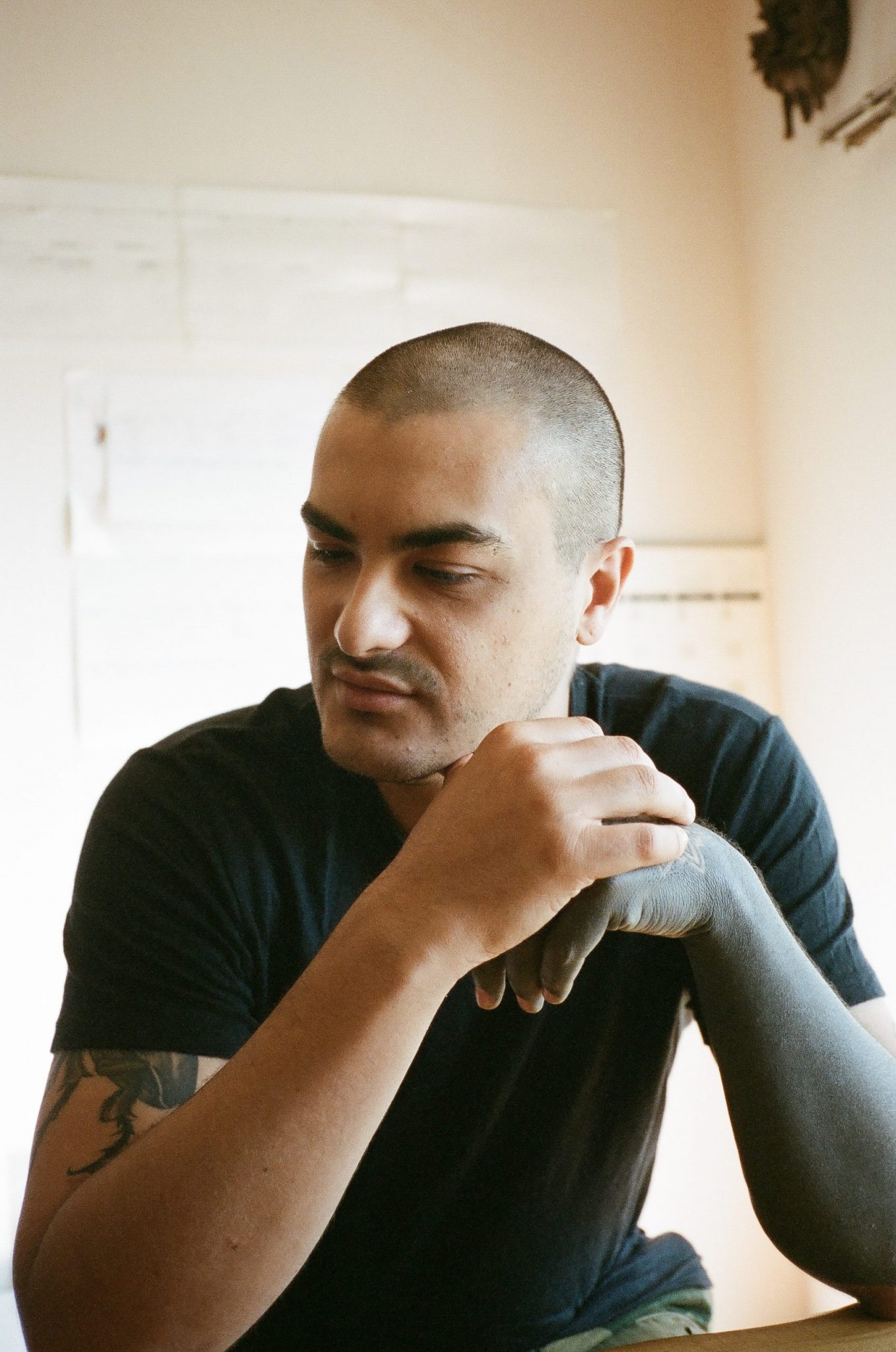
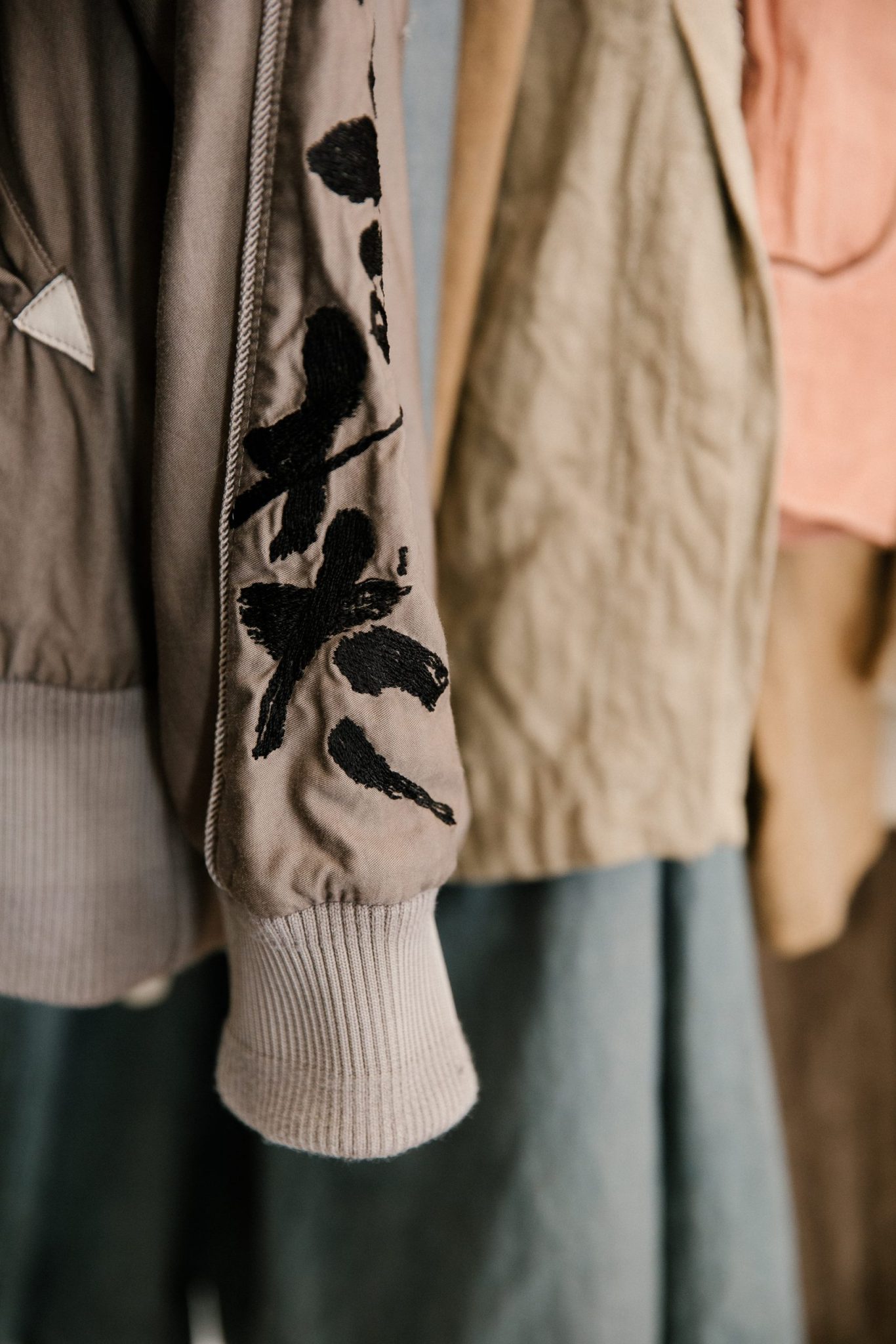
The embroidery reads “born from the dirt.”
“It sounds horrible, but the world is struggle. We have to live through the world somehow, through the struggle. He was being pure to that in a way.”
— Christopher, on Hijikata Tatsumi’s inspiration for the dance form he created, ankoku butoh.
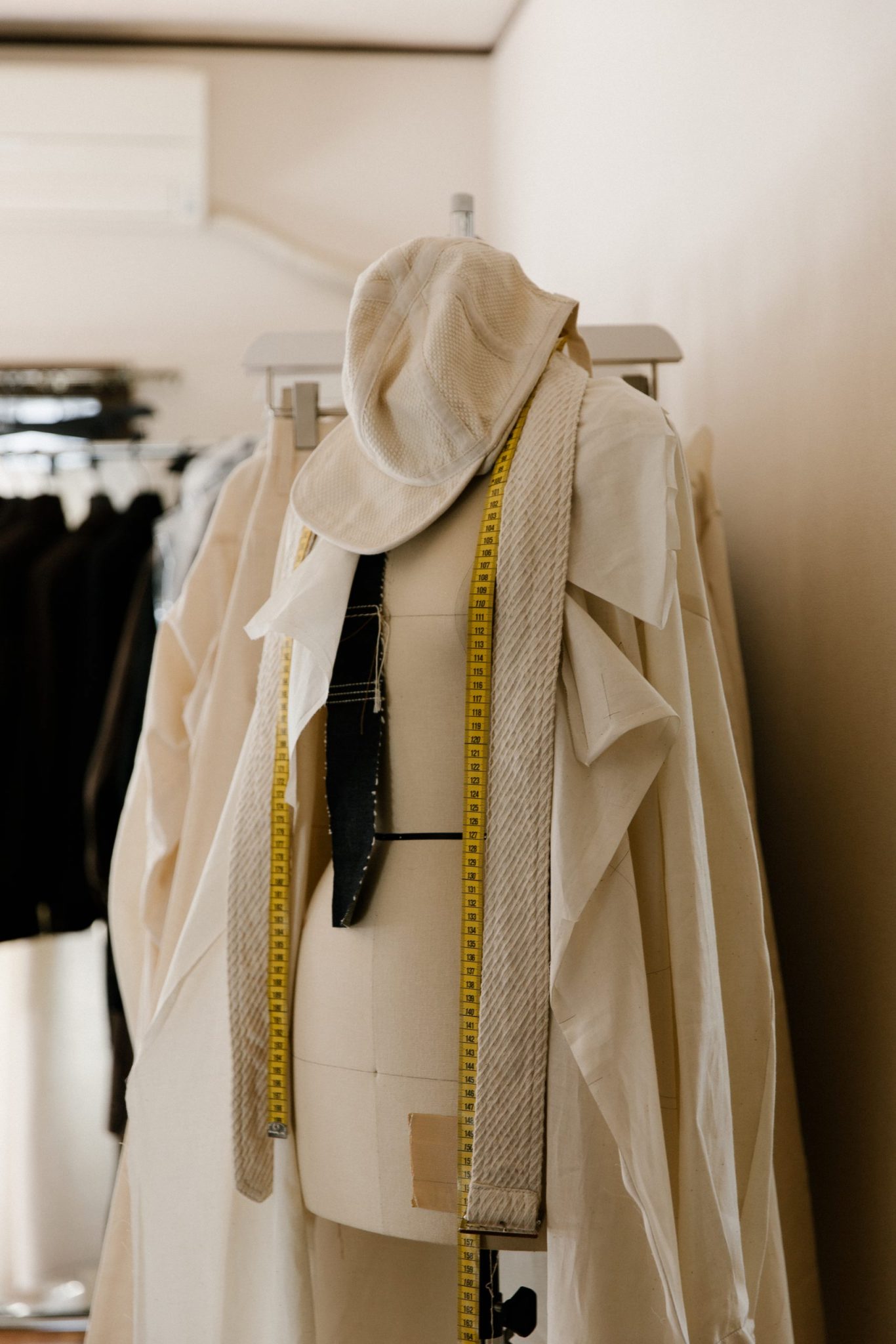
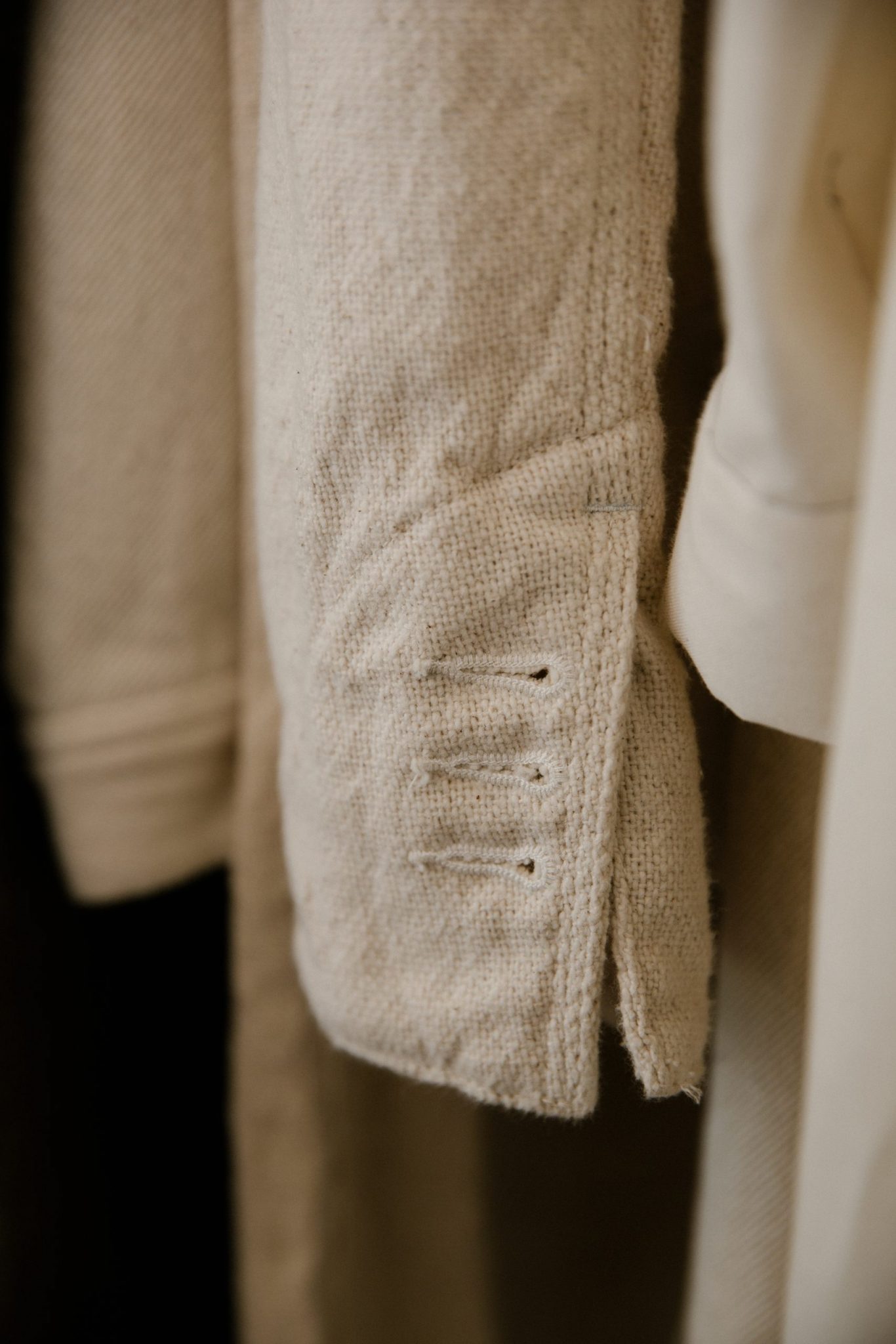
The embroidery reads “born from the dirt.”
Hancy has philosophized extensively about identity. He sees human identity as beginning with the mind and then progressing outwardly from there. He tells me that identity begins with the way a person thinks; next if you’re religious, it’s a person’s spirit.
After that is the way we perceive ourselves physically. Lastly, what comes next, between our physical perception of our self and the rest of society, is clothing. Hancy observes that individuals will think a great deal about the way they interact with others.
“We always actively engage with, ‘who am I hanging out with? Is this person a good person or a bad person? Am I being a good person? What’s my relationship? How’s it working out?’ We stress about that.”
Clothing is the layer that comes between ourselves and other people. “It’s like an amoeba. This kind of cellular organism has a cellular wall which allows things to go in or out. The way we dress ourselves is like how we define that cellular wall.”
BEAUGAN is his expression of this philosophy. “I feel that if we can be responsible for who we are internally, then we can be responsible for who we are externally. Why don’t we think about clothes in the same way?”
This thoughtful consideration of clothing as a part of how we identify ourselves has resonated the strongest with people from professional industries that are adjacent to fashion: writers, graphic designers, architects, photographers, artists, and small business owners. Hancy wanted to create fashion for a new market that isn’t the group of people who are already consuming fashion and are targeted by much of the fashion industry.
Fashion, as he sees it, has a long history of telling people that they can’t be themselves and now, people are pushing back. “Why can’t I just be me? Why do I have to be this pop star or have to look like this magazine image? Why is it valuable to be someone else?” About what he hopes fashion can actually accomplish for individuals he says, “You can really bring the most out of yourself. You can create yourself visually, which is a beautiful thing.”
ハンシ―はアイデンティティについて哲学的な意見を述べた。人間のアイデンティティは内から外へと発展するものであると。自分の心を起点とし、次にそれがその人の考え方に発展し、宗教を信じる人はそこに宗教の精神が加わり、最後に自分自身を肉体に認識することができる。自己の肉体的認識にまで至った上で、自己と他者を分かつ間にあるものは何か。それは、服である。ハンシ―は服を、自己を他者を繋ぐ素晴らしいツールになると考察している。
「僕たちはいつも積極的に、“自分がだれとつるんでいるか”“この人は良い人か、悪い人か”“私自身は良い人か?”“自分のリレーションシップはなにか?”“これはどう機能しているのか?”など考えてばかりでストレスを感じてしまう。」服は、自分自身と他者との合間に存在する一つのレイヤーである。「それはまるでアメーバにようだと思っている、そういった細胞組織が細胞壁を通して物質を出し入れするように、私たちがどう服を着るかは、どうその細胞壁を定義するかと似ていると思う。」
BEAUGANは彼の哲学そのものだ。「僕はこう思うんだ。もし僕らが自分の内面に責任を持てるとしたら、その後に続いて外見にも責任を持てるようになると思うんだ。服のことも同様に考えてみたらどうかなと思うんだけれど。」
自分自身のアイデンティティをどう定義するかを含む、たくさん考えを巡らせた服は、芯がある人々で、ファッション業界に隣接するような人々の心に響いている。たとえばグラフィックデザイナー、建築家、写真家、芸術家、小規模の起業家などの人々だ。ハンシ―は現代の過度に派手なファッションを消費するような人々ではない人々向けに新しいファッションのマーケットを作りたいと思っている。ファッションとは歴史的にありのままの自分でいさせてくれないものだったからこそ、人々は現在それに反抗しているとハンシ―は語る。「なぜ自分はありのままの自分でいたらダメなのか?なぜ自分は雑誌と同じような恰好をして、ポップスターみたいにしていないとダメなのか?それは周りの人達にとって価値があるものなのか?」彼はファッションが個人に対して達成してほしいことをこう語る。「本当に、自分自身をありのままに表現するんだ。皆、自分自身の内面を可視化することができるんだよ。それこそが美しいことなんだ。」

Detail of a piece from the first BEAUGAN collection.
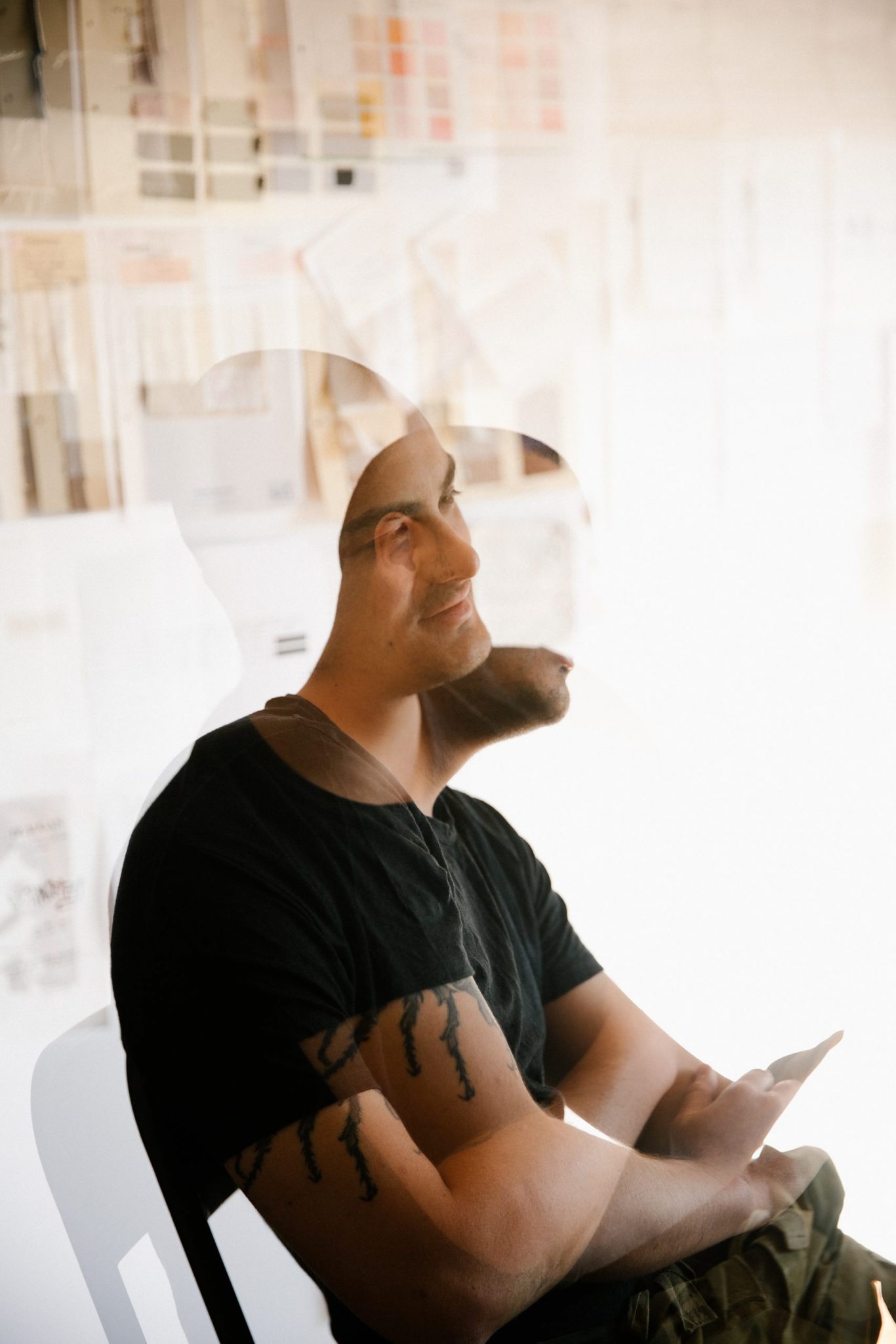

“Why can’t I just be me? Why do I have to be this pop star or have to look like this magazine image? Why is it valuable to be someone else?”
— Christopher on consumers pushing back against fashion’s predominant messaging
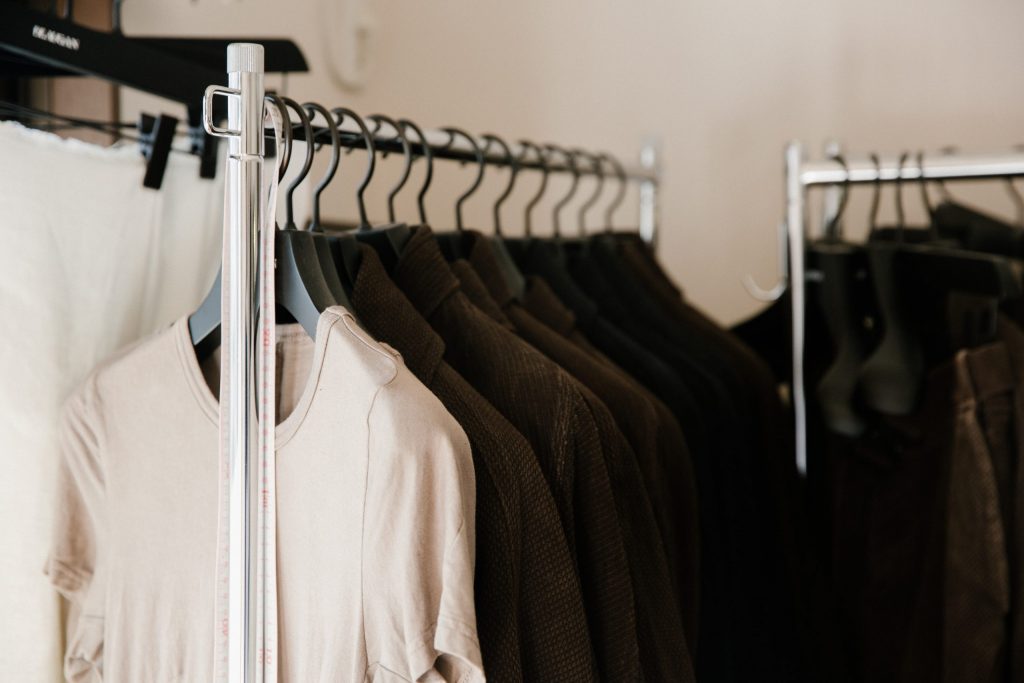
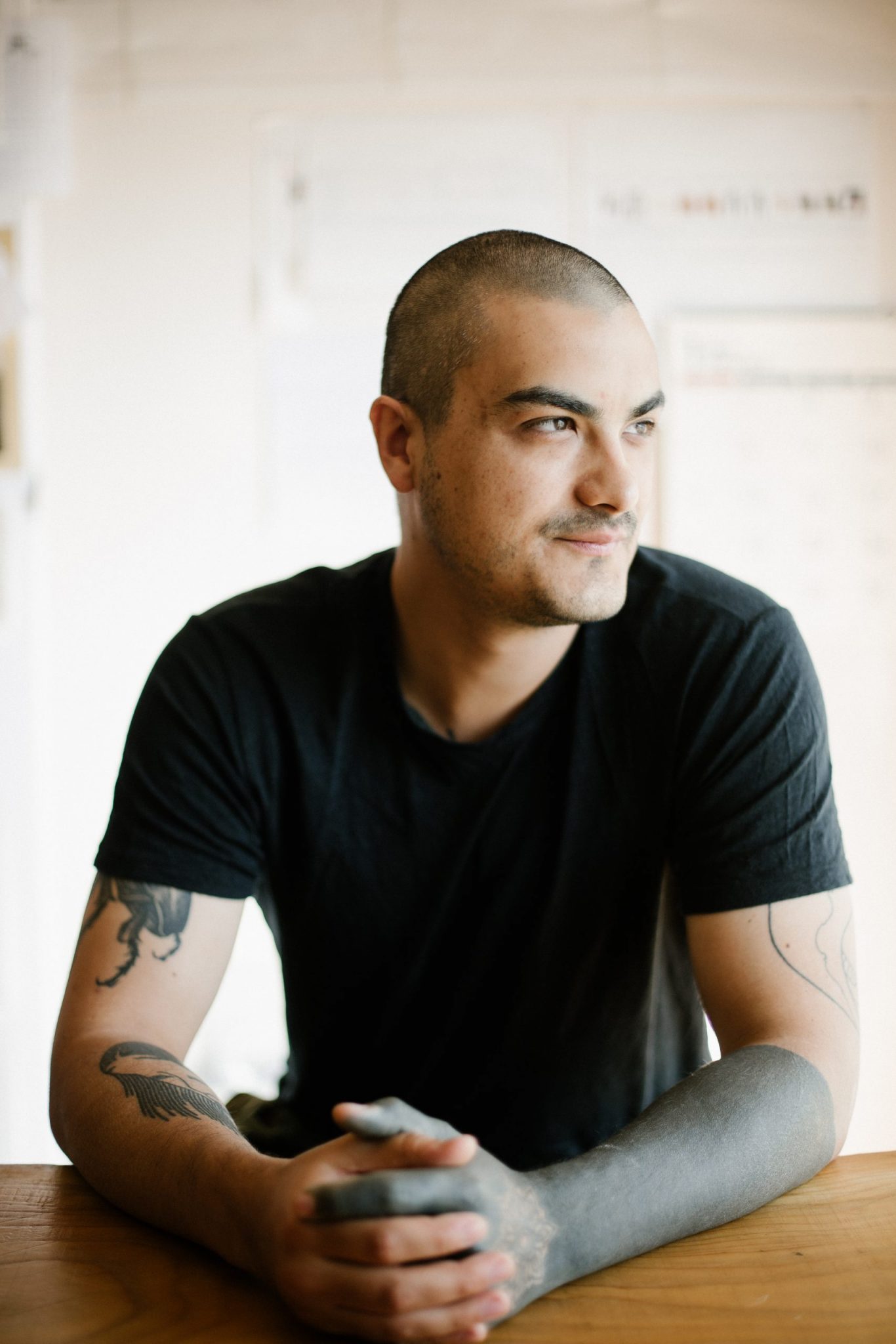
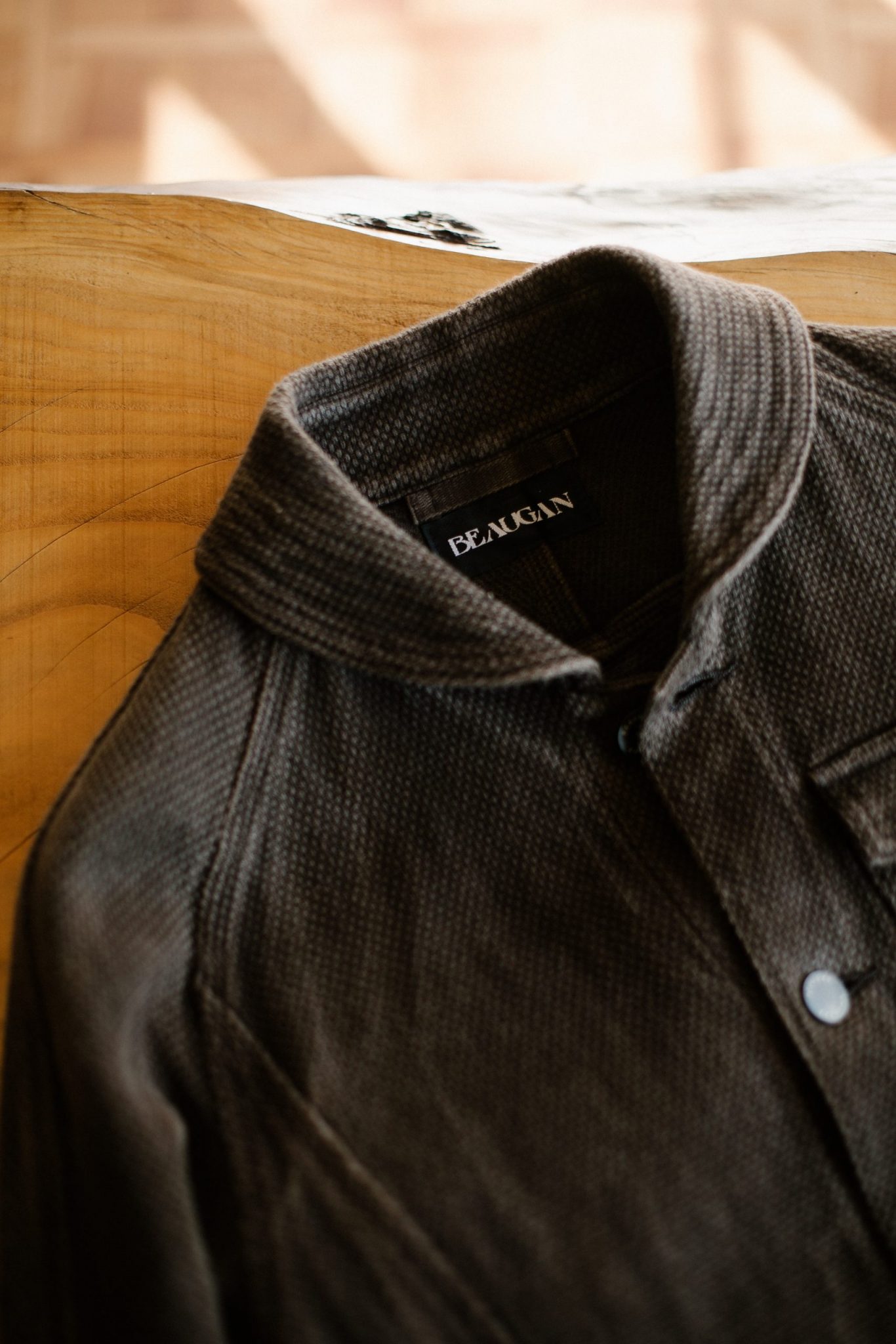
To this end, Hancy has recreated himself in Japan. He tells me that he thinks he could live anywhere, but he sees Japan as having an abundance of history and philosophy that’s beautiful and interesting.
“What I feel like is through investigating things historically here or Europe or wherever, I can start to realize or work out how I can do the same in regards to Australian history, or my own history. It’s learning techniques. That’s what I’m trying to do. I’m trying to learn about myself through learning about other: other cultures, other people, other groups of people, what other people are doing.”
Being based in Japan, Hancy is figuring himself out first—away from places that would, according to him, have more expectations on his behavior. “I’m kind of glad to be in this situation because it gives me so much fluidity and the possibility to move in different groups. I can be whoever I am. There is a freedom of not being burdened.”
This desire to be free to form your own identity independent from the expectations of history or the fashion world is an idea that Hancy wants to unite other people under. “It’s building a community, really; that’s the dream of every person. Every group that creates some culture, they want that. If you don’t have an identity, you want to find your global family.”
As an Australian who chose to leave home and a fashion designer bored with what he observes in fashion, Hancy seeks people who think the same way he does, rather than look similar or work in the same profession.
“I’ve had, since the beginning, this desire to create a global tribe of people who are like-minded and share the same ideas, this same way of thinking. I want to make a base for that. And then, this base, I really want it to be a space to encourage creativity, encourage collaboration, and have the idea of exchange.”
BEAUGAN as a “counter-reaction to fashion” is apparel imbued with the creator’s intention to allow individuals to create their own identity. It is also, as a personal way of thinking and living, the embodiment of Hancy’s pursuit to reveal beauty in the natural world. BEAUGAN in the future, as he intends, will be a community exchanging ideas to create culture in a way they can’t find elsewhere.
In our conversation, Hancy made clear what he has put behind him and what he stands for now, even while his message to the world is still taking shape. “I want substance and I want quality. I created a brand to achieve that. Hopefully I’m getting there.”
最後に、ハンシ―は日本にて、自分自身が生まれ変わったと言う。彼はどこにでも住むことはできたが、日本には数え切れないほどの美しく興味深い歴史や哲学があることを知ったから、日本に住むと心に決めたのだと言った。「何を感じたかって、欧米でも日本でも、歴史的なことをリサーチしていくにあたり、オーストラリアの歴史あるいは自分自身の歴史をどうやってそれと同じように作ることができるかに気付き始めたんだ。それは技術を学ぶこと。それはまさに今自分がやろうとしていることなんだ。僕は自分ではない他者に学ぶことを通して、自分自身を学ぼうとしている。他者とは異文化、あるいは他のグループの人々だったり。」日本に拠点を移し、ハンシ―が初めに気付いたことは、今まで属していたものや場所ではなく、自分自身の行動により評価されることだった。「そういった状況にはある意味感謝している。なぜならほかのグループに入れるような流動性や可能性を、もっと持たせてくれたから。僕はなりたい自分になれる。そこには重荷の一切ない、自由があったんだ。」
ファッションの世界や歴史的背景とは関係なく、自分のアイデンティティを自由に形成したいという想いの下、人々を団結させたい思っている。「コミュニティを形成するようなことだと思う。それはみんなの夢だと思うけれど、全てのグループが、各々の文化を形成すること。もしあなたがアイデンティティがないのであれば、グローバルな家族を見つけたいと思うだろう。」故郷を離れたオーストラリア人かつ現代のファッション業界に飽きてしまったファッションデザイナーとして、ハンシ―は彼と同じ考え方をしている人々を探している、それは見た目が似ているとか同じ職種とかではなく。「同じような考えを共有する“グローバルな民族”を作りたいとかねてから思っていたんだ。僕はその基盤を作りたいと思っている。そしてその基盤では、クリエイティビティやコラボレーションや、意見の交換を促すような機会を持っていてほしいと心から思うよ。」
BEAUGANは、現代のファッションの反抗であり、個人のアイデンティティを形成させたいというデザイナーの想いが吹き込まれたアパレルである。それは個人的な生き方や考え方という意味において、ハンシ―が自然の中で見出す美の追求の具現化でもある。将来のBEAUGANは新たな文化を創り出すために意見を交換できるような、未だかつてないコミュニティになってほしいと彼自身も思っている。今回の会話の中で、彼の世界に発信しようとしている世界はまだ形成途中であるにも関わらず、彼は自分が現在何を背負っており、何に立ち向かっているのかを明確にした。
「実体と質が欲しい、それが達成できるブランドを立ち上げた。今既にそこに到達し始めていることを願うよ。」













